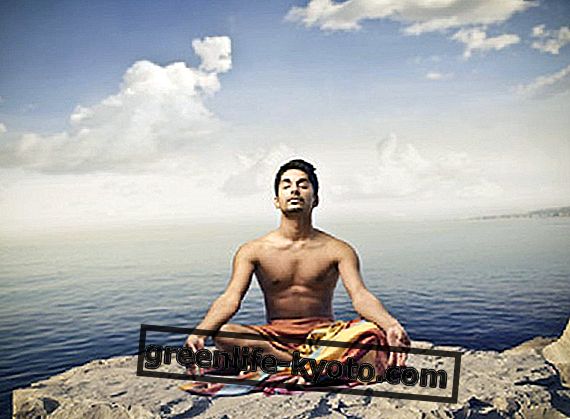
"Thinking with the body" is a book by Jader Tolja, but it is also an open reflection on our daily physical and spiritual life that leads to natural well-being . An important reflection to be aware of, as the way we relate to the world affects our health, gives shape to the dynamics that underlie the functionality of the organism, in essence it shapes us inside and out.
The internal perception of the body changes concretely the relationship with our profession, with space, with time, with people, with clothing, with language, with food, with sexuality and more. It is a coming and going of action-reactions.
Yes, our interior and our exterior continually communicate with each other, influence each other and grow in a certain way. The point is: do we really know how to listen to both sides and know each other so well that we recreate the balance of the parts and not live passively?
From Einstein to Tolja
How important this awareness is, Albert Einstein himself realized, claiming that we human beings " need to think with sensations in our muscles ". This reflection probably inspired Jader Tolja, author of "Thinking with the body", a doctor, psychotherapist and researcher at the University of Bratislava, where he works as research director of the Body Conscious Design Lab .
The author has been studying for more than twenty years the specific modalities through which culture, mind and body mutually change each other, and shares the results of such research at private universities and academies, in Europe and beyond. He is the author and co-author of several books on the subject, of which "Thinking with the body" is the best known and translated one, written in collaboration with the journalist and counselor Francesca Speciani .
Discover the tips to develop an inner discipline
The invitation to use all the potential of the body
The message of Tolja is in practice an open invitation not to limit our capacity for thinking and processing reality to the mind alone, but to think with the whole body . Body thought is therefore to be considered the revolutionary theme, that is the attempt to integrate and to listen also to our inner physical thought, that which the body puts into action spontaneously, according to the different situations in which it finds itself.
" As long as it's not in the flesh, knowledge is just noise, " that's what an old New Guinea proverb also says. Until we feel we live in the things we live outside, little we have learned. Indeed it is so. When we feel in harmony with the universal and cosmic laws we are fine, when instead these come to a halt, when there is something that is perceived in depth that is wrong, we begin to feel bad. As Troja claims, responding to an interview by MB Pavita and P. Diyhani made long ago for the newspaper la Repubblica, "When we are in accordance with natural laws we experience a feeling of well-being.
When we disagree, we create a dissonance, we are uncomfortable. We are all physically uncomfortable. The way in which a space is structured conditions that in which the body is structured. A space changes you physically. A space that deprives you of the side view, like a narrow avenue with tall buildings, leads you to a condition of discomfort: it is like living with the blinders. A square or a very broad panorama opens you instead to a visceral condition of well-being. "
How do you learn to think with your body?
Simply unlearn! Eliminating those mental superstructures that prevent the human being from being able to freely tap into the corporal faculties. Superstructures that can be given by a certain type of education, by a certain way of having practiced physical education as children, by a certain teaching that concerns the way of feeling the body. If you look at it, the Indians of India, for example, feel the body a lot when they practice yoga above all.
Their stomach is seen to swell and deflate rhythmically with breathing, the eyes in the female dances move and with them the hands. In a daily gesture that involves all the crucial points, from head to toe, strongly perceived gestures. In the West, generally, the body is as if it were in a cage or forgotten, relegated to a second level with respect to the mind and its decision-making power.
Often, except in rare cases, one notices the body only when one is dealing with illness or when the body is transformed by pregnancy, and one forgets that only when one is in deep contact with one's soul and with the your body can express something transcendent and something so important that it must be heard.













